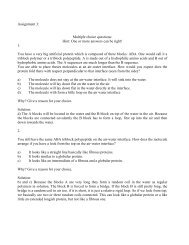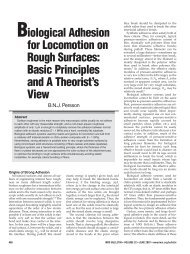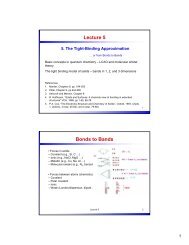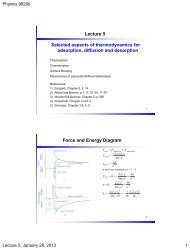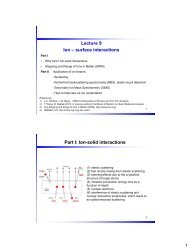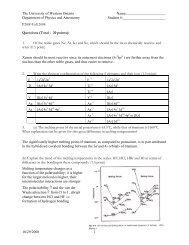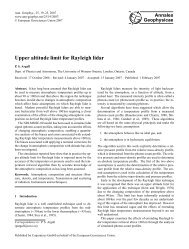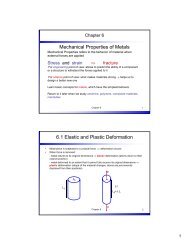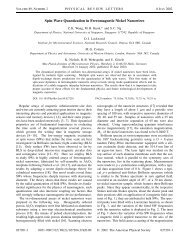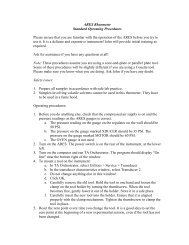P259E Laboratory Manual
P259E Laboratory Manual
P259E Laboratory Manual
You also want an ePaper? Increase the reach of your titles
YUMPU automatically turns print PDFs into web optimized ePapers that Google loves.
Phase shift describes the difference in timing between two otherwise similar signals. In thefigure below, the waveform labeled “current” is said to be 90 ο out of phase with thewaveform labeled “voltage,” since the waves reach similar points in their cycles exactly ¼ ofa cycle apart (360 ο /4 = 90 ο ).Figure 7. Phase ShiftBandwidthThe bandwidth specification tells you the frequency range the oscilloscope accuratelymeasures. As signal frequency increases, the capability of the oscilloscope to accuratelyrespond decreases. By convention, the bandwidth tells you the frequency at which thedisplayed signal reduces to 70.8% of the applied sine wave signal. (This 70.8% point isreferred to as the “-3 dB point,” a term based on a logarithmic scale).Rise TimeRise time is another way of describing the useful frequency range of an oscilloscope. Risetime may be a more appropriate performance consideration when you expect to measurepulses and steps. An oscilloscope cannot accurately display pulses with rise times faster thanthe specified rise time of the oscilloscope.Sweep SpeedFor analog oscilloscopes, this specification indicates how fast the trace can sweep across thescreen allowing you to see fine details. The fastest sweep speed of an oscilloscope is usuallygiven in nanoseconds/div.The TRIGGERThe scope produces an on-screen graph of voltage vs. time, which is continuously updated.For a periodic signal, we need a way to arrange the graph so that each subsequent drawing ofthe trace is synchronized with the one before; consider the following illustration:4




